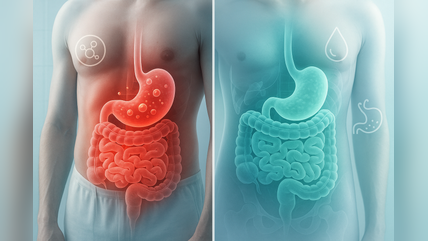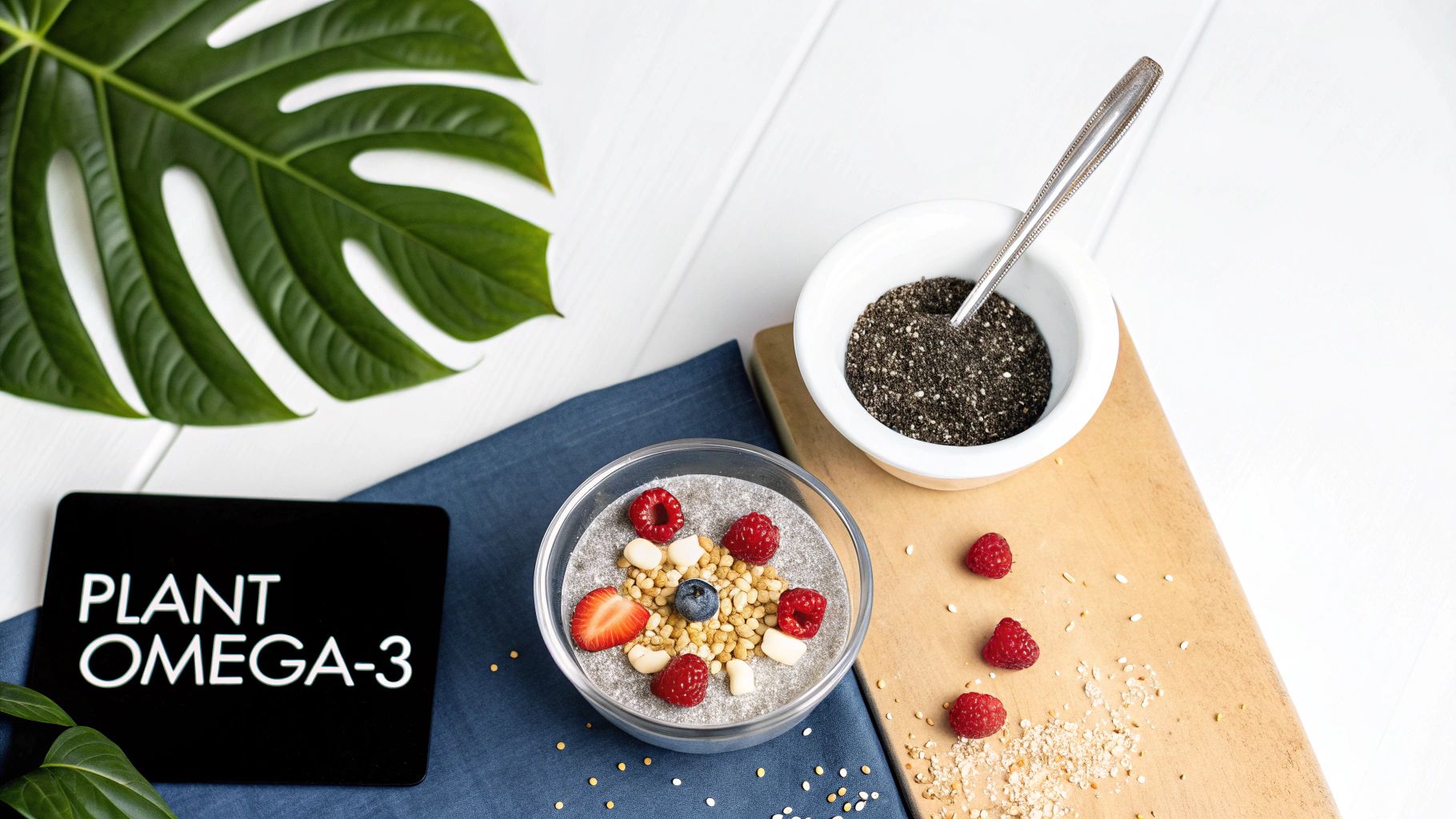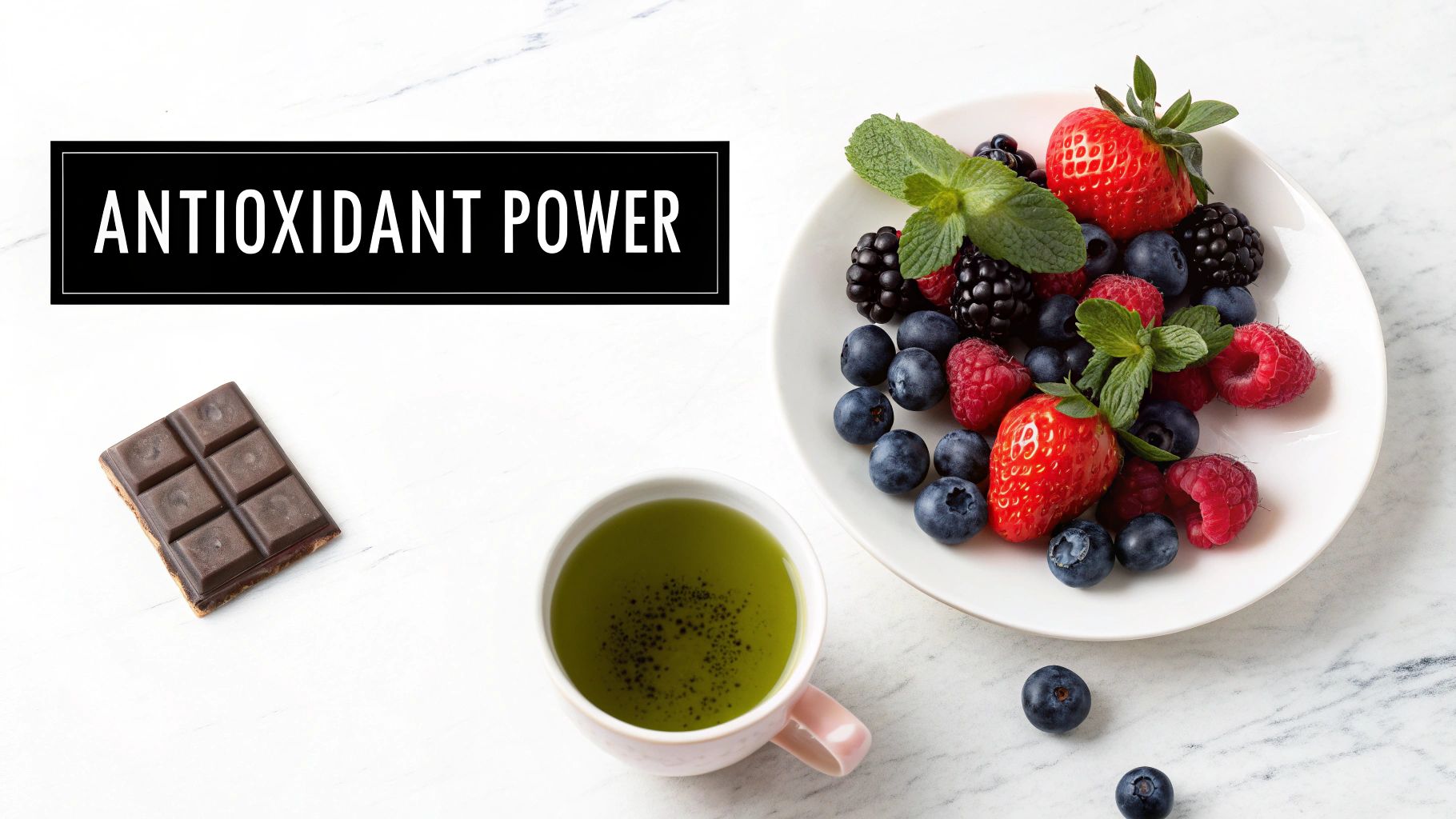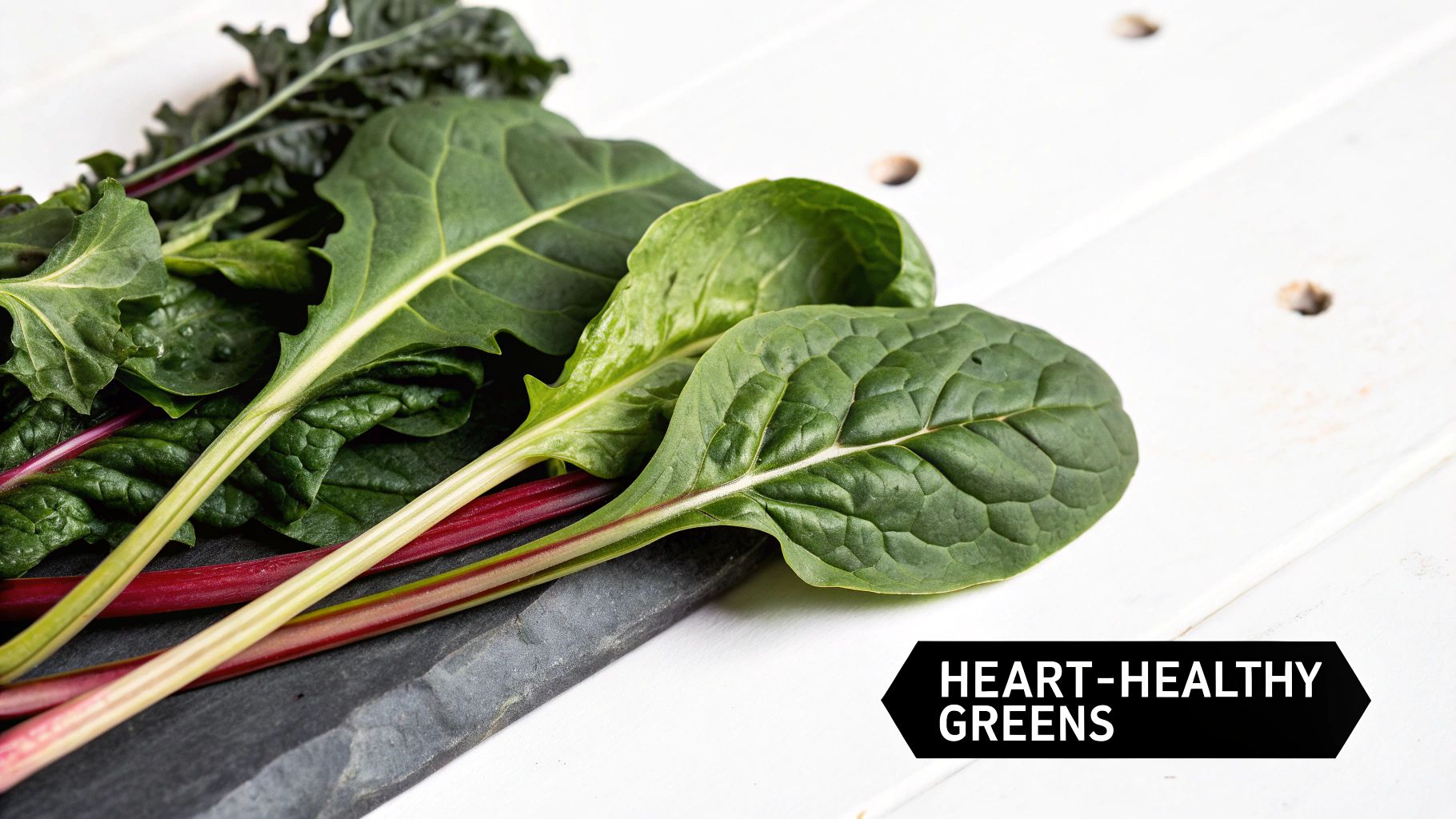Why Psyllium Husk Is So Popular for Digestive Relief
In recent years, psyllium husk has emerged as one of the most trusted natural remedies for constipation and digestive discomfort. With millions searching for gentle, effective solutions to bloating and gas relief, this humble fiber supplement has gained remarkable popularity among healthcare professionals and wellness enthusiasts alike.
The appeal of psyllium for gut health lies in its simplicity and effectiveness. Unlike harsh stimulant laxatives that can create dependency or cause cramping, psyllium works with your body’s natural processes to promote comfortable, regular bowel movements. For those struggling with occasional constipation, chronic irregularity, or the uncomfortable bloating that often accompanies digestive issues, psyllium offers a science-backed solution that’s both gentle and reliable.
This comprehensive guide will help you understand exactly how psyllium works, determine the right dosage for your needs, minimize potential side effects, and create a sustainable routine for better digestive health. Whether you’re new to fiber supplements or looking to optimize your current approach, you’ll find practical, evidence-based strategies to harness psyllium’s benefits effectively.
What Is Psyllium Husk?
Psyllium husk comes from the seeds of Plantago ovata, a plant native to India and Pakistan that’s been used medicinally for centuries. The husks are the outer coating of the psyllium seed, containing an exceptionally high concentration of soluble fiber – approximately 70% by weight. This makes it one of the most concentrated natural fiber sources available.
As a soluble fiber supplement, psyllium behaves uniquely in your digestive system. When mixed with water, it transforms into a gel-like substance that moves through your intestines, acting as a bulk-forming laxative. Unlike insoluble fibers that remain largely unchanged during digestion, psyllium absorbs water and expands, creating a soft, bulky mass that helps normalize bowel function.
This distinctive property sets psyllium apart from other fiber supplements. While wheat bran adds roughage that can sometimes irritate sensitive digestive systems, psyllium’s gel-forming nature makes it gentler and more versatile, capable of both softening hard stools and firming loose ones.
How Psyllium Acts in the Digestive Tract
Understanding the psyllium mechanism of action helps explain its effectiveness. When you consume psyllium with adequate water, it begins absorbing liquid immediately, expanding up to 10-14 times its original volume. This gel-forming fiber creates a viscous mass that serves multiple functions in your digestive tract.
First, the gel lubricates intestinal walls, making stool passage easier and less straining. Second, it provides bulk that stimulates natural peristaltic movements – the wave-like contractions that move food through your digestive system. Third, the gel traps some dietary cholesterol and bile acids, contributing to psyllium’s documented cardiovascular benefits.
The water absorption process is crucial to how psyllium works. As it moves through your small intestine largely undigested, it continues binding water, preventing both the excessive water loss that leads to hard stools and the inadequate absorption that causes diarrhea. This dual action makes psyllium uniquely effective for various digestive concerns.
Psyllium Husk for Regularity (Constipation & Stool Normalization)
The primary benefit most people seek from psyllium for constipation is more predictable, comfortable bowel movements. Clinical studies consistently show that psyllium improves stool frequency, consistency, and ease of passage. Unlike stimulant laxatives that force bowel movements through chemical irritation, psyllium for regularity works by naturally increasing stool bulk and water content.
Research indicates that psyllium is particularly effective for stool normalization. The Bristol Stool Scale, used by healthcare providers to assess digestive health, shows that psyllium helps move stool consistency toward the ideal Type 3-4 range – smooth, soft, and easy to pass. This normalization effect benefits both those with hard, difficult-to-pass stools and those experiencing loose, urgent bowel movements.
The evidence supporting psyllium’s effectiveness is robust. Multiple systematic reviews have confirmed its superiority to other bulk-forming agents for chronic constipation, with studies showing improvement in up to 87% of participants when used correctly with adequate hydration.
Benefits for Occasional Constipation
For individuals experiencing occasional constipation relief needs – perhaps a few times monthly due to travel, dietary changes, or stress – psyllium offers an ideal solution. Unlike stimulant laxatives that can cause dependency with regular use, this gentle constipation remedy supports your body’s natural rhythm without disrupting normal function.
Most people notice improvements within 12-72 hours of starting psyllium, though individual responses vary. The key advantage over harsher alternatives is the absence of urgency or cramping. Psyllium promotes gradual, comfortable relief that doesn’t interfere with daily activities or create bathroom emergencies.
The gentle nature of psyllium makes it suitable for long-term use when needed. Many people find that taking psyllium preventively during known trigger periods – such as travel or stressful work weeks – helps maintain regularity without the need for stronger interventions.
Support for Chronic Constipation & IBS-C (With Medical Guidance)
For those managing chronic constipation or IBS with constipation (IBS-C), psyllium for IBS-C can be a cornerstone of treatment. Clinical guidelines from major gastroenterology associations recommend soluble fiber as first-line therapy for IBS-C, with psyllium showing particularly strong evidence.
Studies specifically examining fiber therapy for chronic constipation have found that psyllium not only improves stool frequency but also reduces abdominal pain and bloating in many IBS patients. One landmark study showed that 57% of IBS patients experienced significant symptom improvement with psyllium supplementation over 12 weeks.
However, chronic conditions require professional oversight. While psyllium is generally safe, working with a healthcare provider ensures proper diagnosis, rules out underlying conditions, and allows for dosage optimization based on individual response. Some IBS patients may need to combine psyllium with other treatments for optimal results.
Psyllium Husk and Bloating – Can It Help or Make It Worse?
The relationship between psyllium husk bloating relief is complex and highly individual. For many people, psyllium ultimately reduces bloating by addressing its root cause – constipation and irregular bowel movements. However, the journey to relief isn’t always straightforward, and understanding the nuances helps set realistic expectations.
The question “does psyllium cause gas?” has a nuanced answer. Initially, some people do experience increased gas and bloating when starting psyllium, particularly if they increase their dose too quickly or have a sensitive digestive system. However, this typically resolves within 1-2 weeks as your gut microbiome adjusts to the increased fiber intake.
Long-term, most people find that psyllium for gas relief is effective, as regular bowel movements prevent the gas buildup that occurs with constipation. The key is patience and proper introduction of the supplement.
How Improved Regularity Can Reduce Bloating
The connection between bloating from constipation is well-established. When stool remains in your colon longer than normal, bacteria have more time to ferment its contents, producing excess gas. This gas, combined with the physical bulk of retained stool, creates the uncomfortable distension and pressure we recognize as bloating.
By promoting regular evacuation, psyllium addresses this root cause. Studies show that people who achieve daily bowel movements report significantly less bloating than those with less frequent elimination. The ability to relieve bloating with fiber comes from breaking this cycle of retention and fermentation.
Additionally, psyllium’s gel-forming properties may help trap and eliminate excess gas as it moves through your system, providing a dual mechanism for bloating relief.
Why Some People Feel More Bloated at First
The psyllium side effect bloating that some experience initially has several explanations. First, your gut bacteria need time to adapt to the increased fiber substrate. During this adjustment period, they may produce more gas than usual as they learn to process the new food source.
Second, if you’re transitioning from a very low-fiber diet, your digestive system may be unprepared for the sudden increase in bulk. This can temporarily slow transit time, paradoxically worsening bloating before improvement occurs.
Starting psyllium slowly is crucial for minimizing these effects. Your digestive system is remarkably adaptable, but it needs time to adjust enzyme production, bacterial populations, and motility patterns to accommodate increased fiber intake.
Tips to Minimize Bloating When Using Psyllium
To reduce bloating with psyllium and learn how to take psyllium without gas, follow these evidence-based strategies:
Start with just one teaspoon (about 3 grams) daily for the first week, even if package instructions suggest more. This allows gradual microbiome adaptation. Increase by one teaspoon weekly until you reach your target dose, typically 5-10 grams daily.
Timing matters significantly. Taking psyllium with meals can reduce bloating compared to between-meal dosing, as the presence of other foods may slow fermentation and gas production. Some people find evening doses cause less daytime bloating.
Ensure you’re drinking at least 8 ounces of water with each dose, plus maintaining good overall hydration throughout the day. Inadequate water can worsen both constipation and bloating.
Additional Gut Health Benefits of Psyllium
Beyond regularity and bloating relief, psyllium prebiotic benefits contribute to overall digestive wellness. While not technically a prebiotic by strict definition, psyllium undergoes partial fermentation in the colon, supporting beneficial bacterial growth and diversity.
The relationship between psyllium and gut microbiome health is increasingly recognized. Studies show that regular psyllium consumption increases populations of beneficial bacteria like Bifidobacteria and Lactobacilli while potentially reducing harmful species. This microbiome modulation may contribute to psyllium’s anti-inflammatory effects and improved gut barrier function.
The fermentation of psyllium produces short-chain fatty acids, particularly butyrate, which serves as the primary energy source for colon cells. This supports the fiber and gut barrier connection, potentially reducing intestinal permeability and inflammation. While research continues, these mechanisms may explain why psyllium users often report improvements beyond just regularity.
How to Take Psyllium Husk for Regularity & Bloating
Understanding how to take psyllium husk properly maximizes benefits while minimizing side effects. Psyllium comes in several forms: powder, capsules, and wafers. Powder is most economical and allows precise dosing but requires mixing. Capsules offer convenience but may require taking multiple pills for therapeutic doses. Wafers provide a cookie-like option but often contain added sugars.
The psyllium dosage for constipation typically ranges from 5-10 grams of psyllium husk daily, divided into 1-3 doses. However, individual needs vary based on diet, hydration, activity level, and digestive sensitivity. Following proper psyllium directions ensures safety and effectiveness.
Recommended Starting Dosage and Titration
The key to success is a conservative starting dose psyllium approach. Begin with 1 teaspoon (approximately 3 grams) mixed in 8 ounces of water, taken once daily. After one week without significant bloating or discomfort, increase to twice daily. Continue this pattern of gradual increases until you achieve desired results or reach the maximum recommended dose.
To increase fiber slowly and safely, never jump more than 3-5 grams weekly. This measured approach allows your digestive system to adapt while helping identify your optimal dose. Some people achieve perfect regularity with just 5 grams daily, while others need 15 grams or more.
Keep a simple diary tracking dose, timing, and bowel movement frequency/quality during titration. This helps identify the sweet spot where benefits maximize without uncomfortable side effects.
Best Time of Day to Take Psyllium
Determining when to take psyllium depends on your schedule and digestive patterns. The psyllium morning or night debate has no universal answer – both can work effectively with different advantages.
Morning dosing often stimulates a bowel movement within a few hours, establishing a predictable routine. This works well for people who prefer completing bathroom needs before leaving home. Take psyllium 30 minutes before or with breakfast for best results.
Evening dosing may cause less daytime bloating and allows overnight processing for a morning bowel movement. However, avoid taking psyllium immediately before bed, as lying down too soon after consumption may cause reflux in sensitive individuals.
Hydration – Why Water Intake Is Critical
The instruction to drink water with psyllium isn’t merely a suggestion – it’s essential for both safety and effectiveness. Each dose requires a minimum of 8 ounces of water, but more is better. Without adequate fluid, psyllium can’t form its beneficial gel and may actually worsen constipation.
The fiber and hydration relationship extends beyond just the dose itself. Aim for at least 64 ounces of total daily fluid intake when using psyllium, adjusting upward for exercise, heat exposure, or higher fiber doses. Signs of inadequate hydration include worsening constipation, increased bloating, or difficulty swallowing the mixture.
Safety, Side Effects and Who Should Avoid Psyllium
While psyllium husk side effects are generally mild, understanding potential issues helps ensure safe use. The question “is psyllium husk safe?” can be answered with a qualified yes – for most people, when used correctly, psyllium is very safe. However, certain individuals need extra caution.
Knowing who should not take psyllium is crucial. People with swallowing difficulties, esophageal strictures, or gastrointestinal obstruction should avoid psyllium entirely. Those with inflammatory bowel disease should consult their gastroenterologist, as psyllium may worsen symptoms during flares.
Common Side Effects and How to Manage Them
The most frequent psyllium gas and bloating issues typically resolve within two weeks as your system adapts. Managing fiber side effects involves simple adjustments: reduce the dose temporarily, ensure adequate hydration, and consider taking with meals rather than on an empty stomach.
Mild cramping may occur initially but shouldn’t be severe. If cramping persists or worsens, reduce the dose by half and build up more slowly. Some people find that switching brands or forms (powder to capsules or vice versa) improves tolerance.
Contraindications and When Not to Use Psyllium
Absolute psyllium contraindications include difficulty swallowing, bowel obstruction, fecal impaction, and allergy to psyllium. People who should avoid psyllium without medical supervision include those with diabetes (psyllium can affect blood sugar), kidney disease, or those taking multiple medications.
Phenylketonuria (PKU) patients should check labels carefully, as some flavored psyllium products contain aspartame. Pregnant and nursing women can typically use psyllium safely but should consult their healthcare provider first.
Medication Interactions and Timing
The relationship between psyllium and medications requires careful consideration. Spacing fiber and medicine by at least 2 hours prevents potential absorption interference. This is particularly important for medications with narrow therapeutic windows like digoxin, lithium, or warfarin.
Diabetes medications may require adjustment when starting psyllium, as it can lower blood glucose. Iron supplements, antibiotics, and tricyclic antidepressants may also have reduced absorption if taken simultaneously with psyllium.
Choosing a Psyllium Product – Powders, Capsules and Blends
Selecting the best psyllium husk supplement involves comparing forms and formulations. When considering psyllium powder vs capsules, powder typically offers better value and faster dissolution but requires mixing. Capsules provide convenience but cost more per gram of fiber.
When choosing fiber supplement products, avoid those with artificial colors, flavors, or excessive added sugars. Some products combine psyllium with other fibers or digestive aids, which may be beneficial but aren’t necessary for basic constipation relief.
What to Look for on the Label
Reading the psyllium supplement label carefully ensures you’re getting a quality product. Look for products listing psyllium husk as the primary ingredient, not psyllium seed (which contains less soluble fiber). Check the fiber content per serving – pure psyllium husk provides about 3.5 grams of fiber per 5-gram serving.
Choose a clean fiber supplement without unnecessary additives. Organic certification isn’t essential but indicates pesticide-free cultivation. Third-party testing for purity and potency provides additional quality assurance.
Frequently Asked Questions (FAQ) – Psyllium Husk for Regularity & Bloating
How long does psyllium husk take to work for constipation? Most people experience relief within 12-72 hours of starting psyllium. However, optimal benefits for regularity may take 1-2 weeks of consistent use as your digestive system adapts.
Can psyllium husk reduce bloating, or will it make me more gassy? Initially, psyllium may increase gas and bloating for 1-2 weeks. Long-term, most users experience reduced bloating as regular bowel movements prevent gas buildup from constipation.
Is it safe to take psyllium husk every day? Yes, daily psyllium use is safe for most people and often recommended for maintaining regularity. Unlike stimulant laxatives, psyllium doesn’t cause dependency.
What is the best dose of psyllium for regularity? Start with 3-5 grams daily and gradually increase to 10-15 grams, divided into 1-3 doses. Individual optimal doses vary widely.
Should I take psyllium husk before or after meals? Taking psyllium with meals often reduces bloating and improves tolerance. The exact timing matters less than consistency and adequate hydration.
Can I use psyllium husk if I have IBS? Many IBS patients benefit from psyllium, particularly those with constipation-predominant IBS. Start with very small doses and increase gradually under medical guidance.
What should I do if I feel more bloated after starting psyllium? Reduce your dose by half, ensure you’re drinking enough water, and build up more slowly over several weeks. If severe bloating persists, consult your healthcare provider.
Is psyllium better than other fibers like wheat bran or inulin? For constipation and IBS-C, research shows psyllium is often more effective and better tolerated than wheat bran. Inulin has different properties and may cause more gas initially.
Putting It All Together – Building a Safe Psyllium Routine
Creating a successful psyllium husk routine requires patience, consistency, and attention to your body’s responses. Your daily fiber plan should start conservatively: begin with one teaspoon in water each morning, maintaining this dose for a full week before considering increases.
Track your symptoms in a simple journal, noting bowel movement frequency, consistency, ease of passage, and any bloating or gas. This data helps identify your optimal dose and timing. Remember that safe psyllium use means never exceeding recommended doses and always maintaining adequate hydration.
Week by week, gradually increase your dose if needed, adding no more than one teaspoon weekly. Most people find their sweet spot between 5-15 grams daily. Combine your psyllium routine with other healthy habits: regular physical activity, stress management, and a balanced diet rich in whole foods.
If you don’t see improvement after 4-6 weeks of consistent use, or if you experience concerning symptoms like severe pain, bleeding, or worsening constipation despite proper hydration, consult a healthcare professional. They can rule out underlying conditions and potentially recommend additional treatments to complement your fiber therapy.
Remember that psyllium is a tool, not a magic solution. It works best as part of a comprehensive approach to digestive health that includes proper hydration, regular movement, stress management, and attention to overall dietary quality. With patience and proper use, psyllium can become a valuable ally in achieving comfortable, predictable digestive function.




























